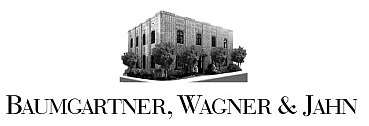Under Washington’s Products Liability Act, there are several tests for determining whether products are unsafe. Products may be unsafe because of a defect in design, or because of inadequate warnings, instructions, or labeling. Products may also be unsafe because of some defect in their manufacture, construction, or installation. Breach of warranty is another basis for a products liability claim.
Products Unsafe Because of Inadequate Design and/or Warnings
A product manufacturer is liable for harm caused by a product that is not reasonably safe as designed, or is not reasonably safe because adequate warnings or instructions were not provided. In Washington, there are two tests for determining whether a product is unsafe as designed or because of inadequate warnings.
The first test is a balancing test. As applied in a design case, the likelihood of injury or damage from the product, coupled with the seriousness of the injury, is balanced against the burden on the manufacturer to design a product that would have prevented the injury, coupled with the adverse effect that a practical and feasible alternative would have on the usefulness of the product. RCW 7.72.030(1)(a). Applied in a warnings or instructions case, the likelihood of injury or damage from the product, coupled with the seriousness of the injury, is balanced against the adequacy of the warnings given and the ability of the manufacturer to provided an alternative warning that would have prevented the injury. RCW 7.72.030(1)(b).
The second test for determining whether a product is unsafe in a design or warnings case is the consumer protection test. Under this test, a manufacturer is liable if its product is unsafe to an extent beyond that which would be contemplated by an ordinary user. RCW 7.72.030(3). In determining whether a product is unsafe under the consumer expectations test, a jury will look at the relative cost of the product, the serious of the potential harm from the claimed defect, and the cost and feasibility of eliminating or minimizing the risk.
Products Unsafe Because of Defects in Construction
A product manufacturer is also subject to liability for harm caused by a product that is not reasonably safe in construction. Again, there are two independent tests a jury can apply to determine whether a product is unsafe because of a defect in construction.
Under the first test, a product is unsafe if when it left the manufacturer’s hands it deviated in some material way from the manufacturer’s design specifications or performance standards, or from otherwise identical units of the same product line. RCW 7.72.030(2)(a). The consumer expectations test is also used to determine if a product is unreasonably safe because of a defect in construction. RCW 7.72.030(3).
Products Unsafe Because of Breach of Warranty
A product may also be not reasonably safe because it does not conform to a warranty made by the manufacturer. A manufacturer is subject to liability for breach of warranty under Washington’s Products Liability Act if the warranty is the basis of the bargain for its sale, the warranty relates to a material fact about the product, and the warranty is untrue. RCW 7.72.030(2)(b).
Seller’s Liability
A product seller other than a manufacturer is generally only liable for harm caused by a product caused by the negligence of the seller, by breach of express warranty made by the seller, or by an intentional misrepresentation or concealment by the seller about the product. RCW 7.72.040.
